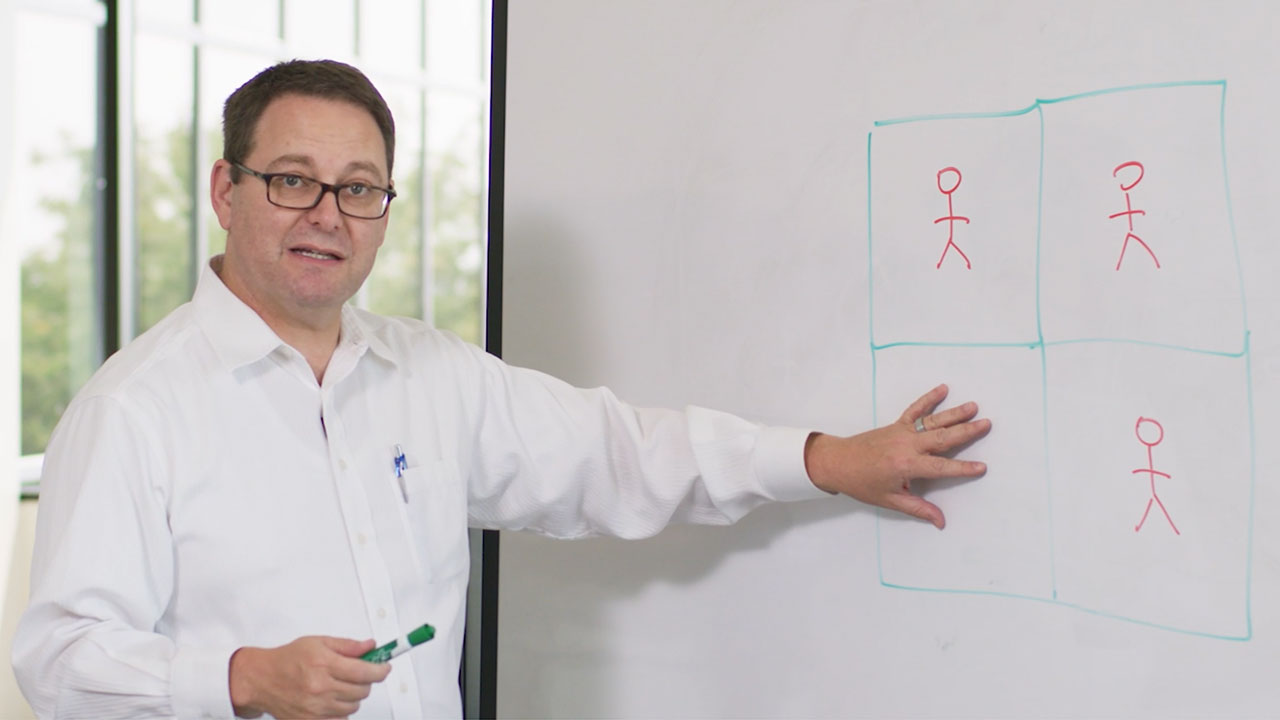Principle in Brief
A fundamental principle of human progress is the division of labor by comparative advantage and the resulting increase in cooperation. Specialization by comparative advantage with voluntary exchange and teamwork is much more effective at satisfying people's needs than any other form of organization.
Employees have a comparative advantage in a group when they can perform an activity at a lower opportunity cost than others. For example, selling is typically a comparative advantage of successful salespeople, even though they may also be very good at sales analysis. This gives sales analysts a comparative advantage at doing analysis, even when they are not as proficient at it as outstanding salespeople. Employees and groups who take account of their comparative advantages (not just competitive advantages) contribute more, thus are more successful.
In staffing, this principle calls for each of our organizations to begin with a clear vision of what capabilities are needed for making the greatest contribution. Contribution-motivated individuals with the optimal diversity of talents and interests can then be selected to build the needed capabilities.
Roles and responsibilities are designed not only to fit each employee’s talents and interests but in relation to the roles and abilities of other employees in a way that optimizes the group’s overall performance. This is accomplished through an ongoing dialogue between employees and supervisors with assistance from others. It includes supervisors giving employees frequent, honest feedback to help them understand their performance and how to increase their contribution. It is also essential that supervisors solicit feedback from employees regarding what would enable the employee, the supervisor and the group to improve.
Because conditions and people are always changing, roles and responsibilities need to be continually reassessed to maximize each individual’s contribution and the organization’s overall performance. When an employee leaves, is added, or changes roles, responsibilities throughout must be re-evaluated.
One way everyone can contribute is by identifying potential employees who would strengthen their team and other parts of Koch. A beneficial division of labor by comparative advantage requires a diversity of employees who are contribution motivated and have a variety of aptitudes or skills that will increase our ability to profitably expand our current businesses, solve existing or anticipated problems, or capture new opportunities.
Understand It Better
Examples
Understanding common misunderstandings about comparative advantage can help you avoid them.
- Same as strengths?
- Can it change?
Myth
Your comparative advantage is your greatest strength.
Truth
Your comparative advantage is what you can do to maximize the TEAM’S result. Division of labor by comparative advantage cannot be applied to an individual by only considering that individual. It helps maximize the value the team can create by COMPARING different alternatives for who could be working on what.
Myth
A person’s comparative advantage is fixed.
Truth
A person’s comparative advantage can (and does) change — and sometimes dramatically. A person’s comparative advantage often changes when the team changes in some way or business conditions and opportunities change.
Give It a Try
The power of these principles happens through application. There’s no substitute for learning as you apply.
- Find your own example of division of labor by comparative advantage (consider the current events, sports, and your own personal experience). Share it with your team.
- Talk to your supervisor about your current responsibilities. How do your responsibilities and efforts reflect your comparative advantage among the team? Should they be adjusted?
- Reflect on the last 6-12 months. What changes have affected your (or a team member’s) comparative advantage? Discuss your thoughts with your supervisor.
- List the key responsibilities of your entire team. Discuss possible variations of who might work on what. Could the team create more value by organizing work differently?
- What are some things happening now or in the future that might change the comparative advantage of one or more people on the team?
- Given the examples above, have you experienced these common misunderstandings? Why are these common misunderstandings? How do we overcome them?

